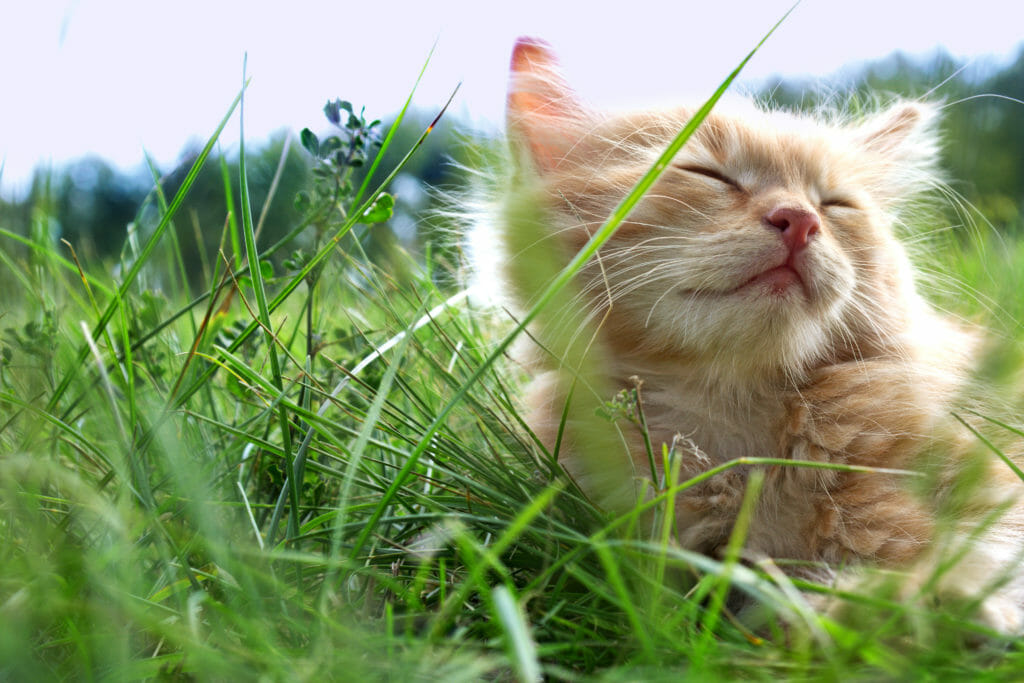
Nail Trimming and Ear Cleaning for Cats
Grooming our pets not only strengthens the human-animal bond, but it can also help us to discover any potential medical or health problems early. Routine nail trims and ear cleaning are just as important as a healthy hair coat when considering grooming our pets.
How often should I cut my cat’s nails?
Cats scratch for 2 main reasons:
1) To leave their unique “scent” on an object to let other cats know this is part of their “territory.”
2) Nail health
Always provide proper scratching posts/platforms to allow cats to claw/scratch. This not only provides pleasure for our cats but aids in nail health. Cat nails grow in layers, and scratching/clawing helps remove these layers and provide a sharp point. Indoor cats should routinely have their nails trimmed every 2-4 weeks depending on how much “sharpening” they perform. Keeping the sharp points trimmed will decrease the likelihood of becoming caught in rugs/fabric or sensitive human skin. Outdoor cats should NOT have regular nail trims. They need to have sharp nails to escape from predators (climbing/jumping) as well as defend themselves against threats. Senior cats are more likely to be affected by arthritis. Because of this, grooming and active scratching and clawing declines. Nail layers tend to build up, and this can become uncomfortable as well as affect nail bed health. Trimming our senior cat’s nails, peeling away any extra nail layers and gently cleaning the nail beds should be performed routinely. Always be mindful of dew claws (nails higher on the limbs) and “extra” toes (polydactyl) – these nails do not come in contact with objects as easily and tend to become overgrown. This is not only painful but also carries the risk of infection. If you notice an ingrown nail (when the nail actually grows into the skin or footpad), please seek veterinary care as soon as possible.
How often should I clean my cat’s ears?
Cats are generally very good groomers and require minimal care where ears are concerned. Mild debris and wax can be normal and should be removed with a small amount of recommended cleaner placed on gauze or a cotton ball. Gently wipe the outer ear and inner ear flap. Do not put cotton swabs or other devices into the ear canal. This can potentially cause damage to the canal and/or eardrum. It is important to know what is “normal” for your cat. If you notice an odour, redness, inflammation, discharge or debris, or if your cat is shaking their head or excessively pawing/scratching the ears, this can be an indication of infection or parasites (ear mites), please seek veterinary care as soon as possible
What ear cleaning services does the clinic provide?
Routine cleaning can be performed by your veterinarian during an office exam but is generally performed by the veterinary technicians and assistants. Should your pet require a routine cleaning only, and you have no concerns about your pet’s health, please call Dartmouth Veterinary Hospital for an appointment with one of our technicians. Should you have concerns with ear health or are unsure if your pet has an underlying condition, please call for an appointment with your veterinarian.
What is the clinic’s booking and cancellation policy?
Booking nail trims, ear cleanings or other minor elective procedures (i.e., trimming hair from feet, ear hair plucking, clipping minimal hair mats) can be booked with our technicians between 1pm-6pm, Monday through Friday, Saturday appointments are also available upon request. We are flexible with bookings, so please let us know if you have any special requests. Cancellation policy: We appreciate a call at least 12-24 hrs before cancellation or re-booking. There is no fee associated with missed appointments due to unforeseen circumstances or lapse in memory.
Do you offer packages?
We currently do not have a package that includes nail trimming and ear cleaning combined.

